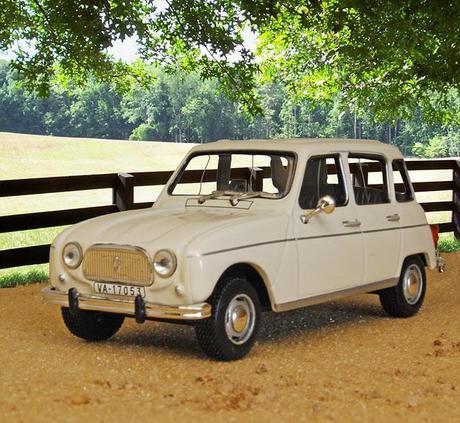I've owned real 1:1 size hatchbacks for many years, because they're the perfect choice for our little two-person family of my wife and I, living here in Sydney's inner-city suburbs. Hatches are compact enough to squeeze into small parking spaces, they can be re-configured to carry home plants and hardware when I need to, and they can handle the highways for touring holidays with just the two of us to haul from A to B. Oh, and they're economical, fun to drive and I've always liked the way they look, come to think of it. Right now I'm driving a Citroen C4 1.6 litre turbo-diesel and it's probably the best car I have owned, but my other hatchbacks, including reliable but boring Mazdas, have also served me well.
In my diecast cabinet, however, there are precious few hatchback cars. Just not sexy enough, I guess. But the two hatches I do have are often cited as being either the 'first' hatchback, or the 'first successful' hatchback, or some other term suggesting an important little milestone in mass four-wheeled transport. Let me start with my idea of the 'first successful' hatchback, and we'll work back from there.

Before I started researching which car the historians think was the first hatchback, this is the
car which owned that title, in my mind at least. The Renault 16. It was certainly a successful
hatch. European Car of the Year in 1966 (it was launched in 65) the 16 was a sales success,
with 1,845,959 made by the time its model run ended 15 years later, in 1980. I've always thought
of this car as the 'first hatch' because it set the basic format which so many hatches made by
other companies followed: front engine, front wheel drive, sloping rear hatch door hinged
at the roofline, rear seats which fold down to make a flat floor for carrying bulky items.
By the way, this 1:43 model is by Minichamps, and it took a long time to find a 1:43 model
of a Renault 16 anywhere. For my Photoshopped diorama I have pictured it at a backwoods
service station here in Australia, a suitable spot for this very good touring car of the 1960s.
Now, there's another car older than the Renault 16 which is often labelled as the 'first hatchback' and I'm comfortable with this choice, as it meets my criterion of being a sales success. It's the Renault 4.

There's a scene in the TV cartoon show 'The Simpsons' in which Lisa Simpson is thumbing
through a magazine called 'Non-Threatening Boys' and that's what this car seems to be like,
a 'non-threatening car'. A friendly face at the front which would not look out of place in one of
Enid Blyton's Noddy books, and a roomy, practical, versatile and economical vehicle behind.
The mighty little Renault R4, so successful that they made over 8 million of them in a model
run which stretched from 1961 through to 1992. Its rear door was top-hinged, the pattern of
the classic hatch, but it seems to me to be more a small wagon, maybe because its rear
end was almost vertical, and not the classic modern sloping back end of the Renault 16.
This 1:43 model of the Renault 4 by Edicola is pictured out in the countryside, where
it was as equally at home as it was in the world's cities and suburbs.
